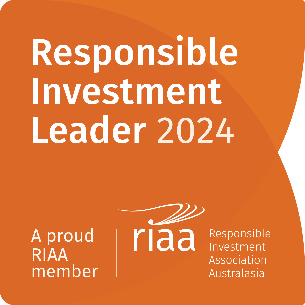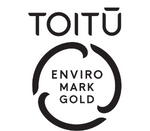Reporting Season Reflections

2nd August 2021: August was truly a fascinating month for investors. Despite the extraordinary backdrop of social and economic closures being enforced across both New Zealand and Australia, our local markets rallied strongly. The S&P/NZX50 Index closed 5.0% higher, whilst the S&P/ASX200 rallied 2.5%. On the face of it, this outcome appears contrary to what many commentators would have expected, given the COVID responses being employed, but there was a number of other important events influencing investors and the broader markets. A key focus was the corporate earnings season which provided valuable insights into the health and prospects of our local stocks, whilst at a macro level it was again the central banks which played a pivotal role.
The reporting season is a biannual event, occurring each February and August. During this time the vast majority of companies listed in New Zealand and Australia announce their financial results, articulate their views as to the operating conditions currently being faced and provide guidance as to how their businesses are expected to perform over the next 12-months. Leading into the recent season, market expectations were optimistic. In fact, since September last year, market analysts in Australia had been lifting their expectations of corporate earnings (relative to downgrades) with a consistency greater than anything seen in the past 30-years. This reflected the unexpected speed with which businesses were able to navigate the COVID challenges of last year, in large part due to the massive stimulus provided by governments and central banks. With such momentum leading into the month, investors were always going to be particularly careful to determine if these expectations would be met.
Looking back over the month we believe that the scorecard was somewhat mixed. There were certainly positives though, and these included the reporting of results which were generally better-than-expected. In Australia almost 50% of companies exceeded expectations by greater than 2% (the long-run average is closer to 40%), whilst only 30% disappointed. This was helped by solid experiences across Financial and Industrial businesses, but it was the Resource companies which enjoyed a particularly strong period as they leveraged off a strong year in commodity prices. In New Zealand, investors also benefitted from outcomes ahead of the consensus view. These surprises occurred across the majority of stocks listed on the S&P/NZX50 Index at both the reported Revenue and Earnings lines. In New Zealand it is more difficult to comment on these outcomes at a sector level, however some individual company highlights included Port of Tauranga, EBOS and My Food Bag.
Another encouraging aspect of the past month was the strength evident in corporate balance sheets. Companies in general responded well to the risks that they faced last year through raising fresh equity and managing their costs and working capital to support their financial sustainability. This did result in a number of encouraging capital management initiatives being introduced. In Australia almost $18bn worth of buybacks and special dividends have been announced (equivalent to 0.8% of the S&P/ASX200 market capitalisation) with the most significant of these coming from the banks CBA, NAB and the ANZ. Although there were also a number of positive dividend surprises enjoyed, across both New Zealand and Australia this was an aspect of the results which was markedly more balanced. The reason for this was potentially the uncertainty which has come with the lockdowns being enforced.
This precarious backdrop also influenced the nature of guidance provided by many of the management teams. Although domestic and international economic growth remains robust, the emergence of the Delta variant has resulted in a more cautionary approach being undertaken in setting expectations for the next 12-months. In Australia the profit outlook for companies listed on the S&P/ASX200 over the next 12-months is still very healthy at 15% growth, but interestingly, despite the strong results just announced, expectations for the Australian market have been downgraded by almost 1% for the next 12-months. Outside of the lockdowns, this also reflects the fact that the iron ore price has fallen recently by almost 40% as concerns over Chinese economic growth have intensified. A similar predicament has been evident in New Zealand with the median earnings-per-share now forecast to grow by 6.9% in the year to June 2022 (in March this year that same forecast was for growth of 11.2% according to work done by Forsyth Barr). After enjoying the benefits of a prolonged upgrade cycle across our markets, it appears now that the momentum has paused. This experience sits in contrast to what we are seeing in the US and Europe where the past month has been characterised by meaningful upgrades to the profit outlook. This is a direct reflection of the better progress that has been achieved in these regions with respect to their vaccination programs.
Despite the future looking slightly more subdued with respect to the potential for positive surprise, the earnings season certainly provided investors with a sufficiently robust platform to maintain their confidence in our local stocks. This confidence in equities generally was also aided by the actions and comments recently made by central banks. Towards the end of the month, all eyes were on comments by Federal Reserve Chairman Jerome Powell, as he delivered a much-anticipated speech at the annual economic symposium at Jackson Hole. His broad conclusion was that in acknowledgement of the economic recovery that has been achieved this year, the current level of stimulus is no longer warranted. Before year-end the Fed will begin reducing the amount of bonds that they buy each month (an initiative often referred to as “tapering”). Although this will essentially tighten monetary conditions, Powell went to lengths to explain that this step did not mean that interest rate hikes in the US are imminent. Although activity levels have recovered, there is still progress required in achieving employment targets and the Chairman’s view remains that current inflation pressures are likely to be transitory. Interestingly this is not a view shared by all Fed regional presidents, with a number of them publicly calling for a more immediate change to interest rates on the back of their concerns that supply chain disruptions, bourgeoning demand and acute labour shortages will have a more permanent effect on prices. This concern is something shared by the Reserve Bank of New Zealand, which was widely expected to lift the overnight cash rate a few weeks ago. This didn’t happen due to the outbreak of Delta, but the RBNZ will move rates higher in the next few months. Investors were comforted though by the appreciation that central banks remain sensitive to underlying conditions and appear more inclined to be cautious in their approach to raising rates – especially overseas.
The recent strength in these markets has been great from the perspective of absolute returns but the opportunity to generate additional returns has also been afforded to us by the challenges associated with COVID. As active investors we spend our lives looking to identify and exploit inefficiencies in markets. What we mean by “inefficiencies” is situations where shares are mispriced relative to their fair value. One of the most common reasons for this to occur is when certain investors place too much emphasis on short-term issues, when in actual fact, this time period has only a small influence on underlying corporate value. March last year provided us with an important reference point to demonstrate how this “short-termism” can lead to sub-optimal investment outcomes. Many investors rushed to exit their stock positions and subsequently missed out on a 35% lift in the S&P/NZX50 and a 54% rally in the S&P/ASX200 over the following 17 months. During the most recent COVID disruptions we haven’t seen a repeat of that level of market volatility but there have certainly been opportunities presented. Across our portfolios we have been actively looking to own businesses that offer valuation support by virtue of them being priced as if the operating conditions associated with the current lockdowns will last well into next year – they probably won’t. We have bought companies such as Cleanaway in Australia, which is the largest operator in the waste management industry, and oOh!media which operates in outdoor advertising. Both are very interesting businesses and although we don’t anticipate that markets will repeat the level of appreciation that we saw after the lockdowns last year, we do remain constructive on markets and believe these types of investments will perform well for us.





